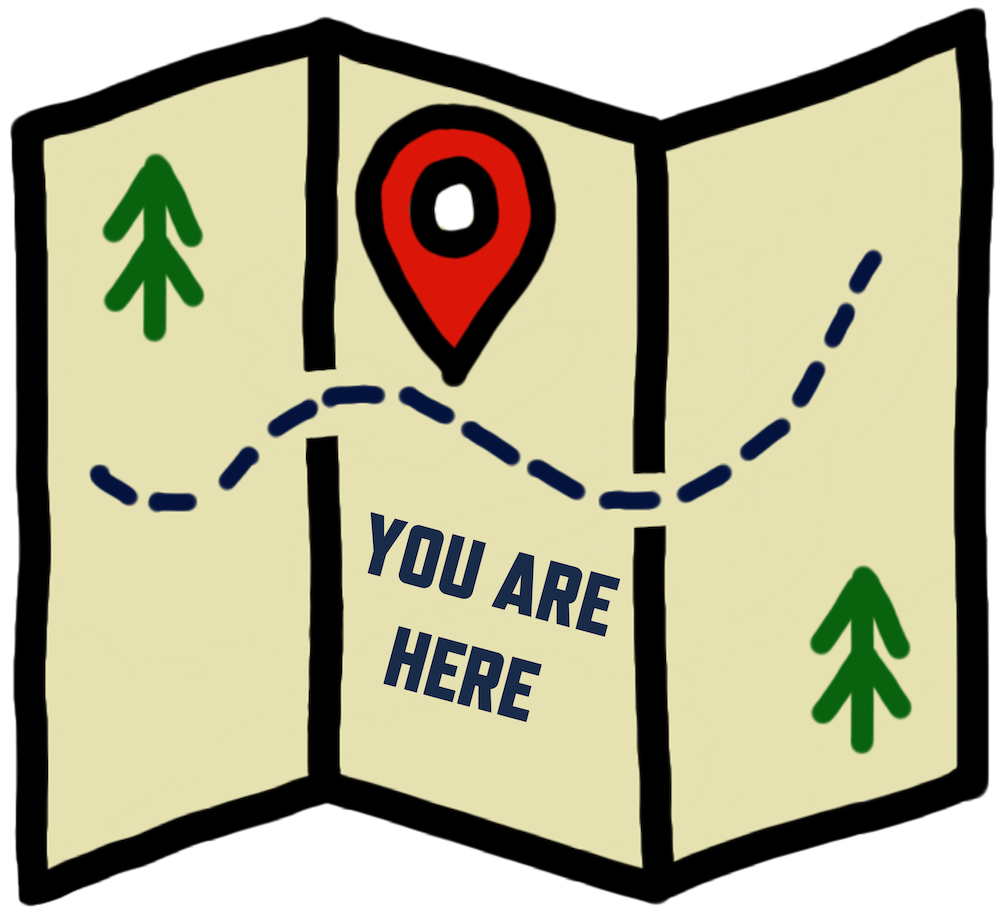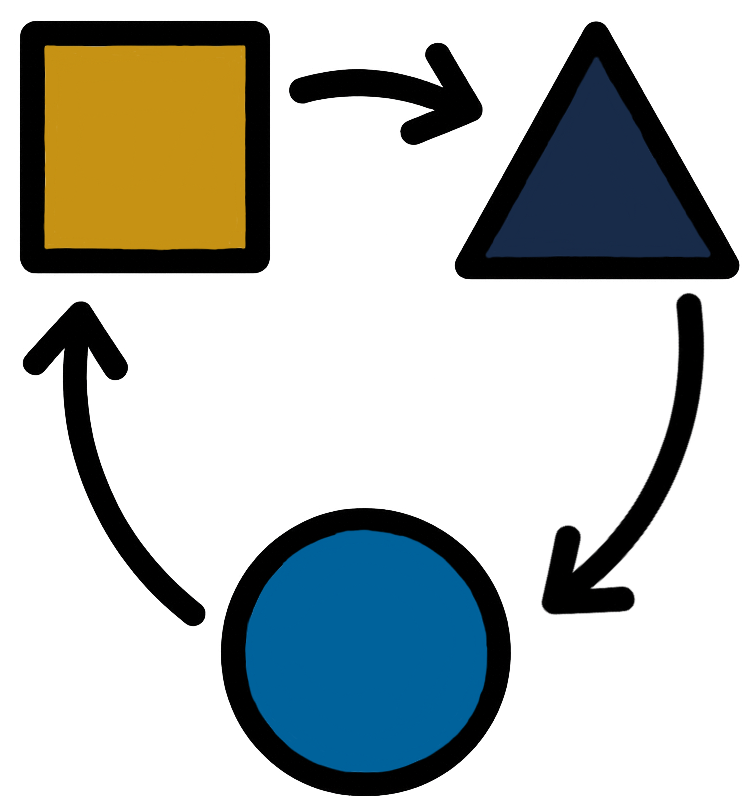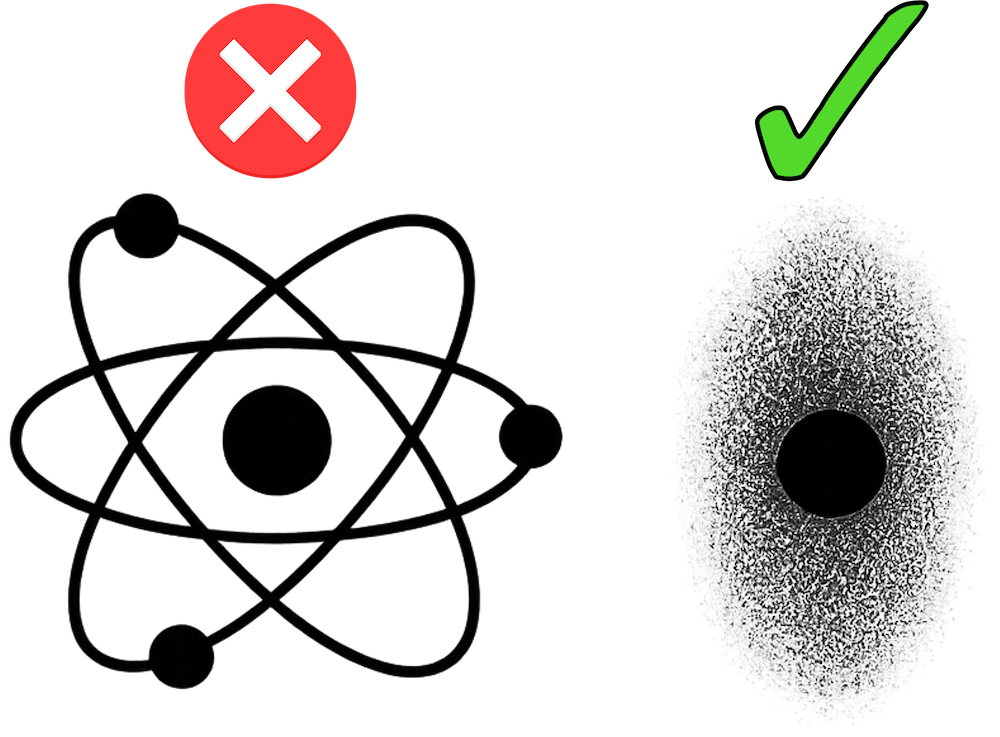What Kinds of Course Videos are Effective Uses of the Medium?
If you're thinking about making videos for your course—whether it's online, hybrid, or in-person—you might be wondering: which types of videos are actually worth the effort? After all, creating an effective video can take time—especially when you consider the limits of cognitive capacity and how we process pictures and words. (See our article on multimedia learning for more information.)
Creating a course video is easier than ever. If you're comfortable with your material, you can throw together a slide deck, record a screen capture in Zoom or Kaltura, and upload it to your LMS. Boom—instant instructional content.
While many students prefer video because of its flexibility—rewatching, playback speed, mobile access—that doesn't always translate to better learning outcomes. Research suggests that especially for novice learners, students tend to assume that they learn better with multimedia than they actually do.
In addition, the short version is that no evidence exists to suggest that multimedia inherently improve learning, enhance motivation, or address more learning styles (Mayer et al, 2022a). What's more, many of the studies performed with regard to multimedia learning weren't designed well, suffering from bias, being rushed, or an inability to isolate causal variables (Muller et al., 2006).
In the end, videos are just another tool in your pedagogical tool belt; they shouldn't be the only medium of didactic instruction in your course. Novice learners tend to think that they're learning more from videos than they actually are, and more advanced learners may believe that they can multitask while consuming a course video and still retain its essential information. Both assumptions are incorrect.
Overall, this reinforces the thesis of our article on video quantity, namely:
Videos should be deployed strategically in courses. They should not constitute the bulk of your instructional material.
This article will focus on how to be strategic in identifying what should be a video in your course. There are educational videos that can be particularly effective uses of the medium, and good targets to think about if you're in the early stages of planning your course. While the suggestions below aren't exclusive, consider how you might use them to consider what to make into a video in your own course.
Module Introductions
 Module introduction videos are arguably one of the most impactful types of course videos you can make. These short, informal videos can help students review prior concepts, preview upcoming material, and provide motivation to engage with the material.
Module introduction videos are arguably one of the most impactful types of course videos you can make. These short, informal videos can help students review prior concepts, preview upcoming material, and provide motivation to engage with the material.
Even a quick extemporaneous video recorded at your desk can help students understand what to focus on and why it matters. They're also a great place to address tricky concepts, clarify expectations, or show your enthusiasm for the topic.
We go deeper into strategy in this separate article devoted to module introductions, but the bottom line is simple: a little context goes a long way.
Process Animations
 There's only so much you can do to simplify complex topics—or, in instructional design terms, to manage their intrinsic cognitive load. One area where videos may assist your students considerably, then, is to illustrate processes that are difficult to grasp solely through words or static visuals. It allows students to see the component steps in a process, watch experts solve complex problems, review cause-and-effect reactions, and visualize abstract concepts.
There's only so much you can do to simplify complex topics—or, in instructional design terms, to manage their intrinsic cognitive load. One area where videos may assist your students considerably, then, is to illustrate processes that are difficult to grasp solely through words or static visuals. It allows students to see the component steps in a process, watch experts solve complex problems, review cause-and-effect reactions, and visualize abstract concepts.
Your animations can be as sophisticated as something produced by a professional artist or as simple as something created by animations or transitions in PowerPoint. It's important, however, that you keep multimedia learning principles and best practices in presentation design in mind. That is, break down the process (and thus the animation) into more manageable chunks, direct students' attention to what you're discussing at the time, and remove anything not relevant to understanding the process. (In other words, segment, signal, and weed.) If you're working with a professional animator, it's also crucial to work closely together on the animation since they likely lack the subject matter expertise to illustrate the process in question in a way that's helpful to your learners.
With that in mind, you should ask yourself similar questions about making an animation as you do with making a video: Is it essential that this process be demonstrated as an animation? As Mayer et al (2022b) state, "research suggests that animated graphics are not necessarily superior to their static counterparts as aids to understanding." In fact, they may make learning harder for some viewers due to the increased cognitive processing required as compared to viewing static images, and increasingly realistic animations may intensify learners' cognitive load (Lowe, 2004).
So, like the rest of instructional design, the efficacy of educational animations depends heavily on staying within our limited cognitive capacity. Based on the cognitive theory of multimedia learning, researchers recommend that animations:
- Draw attention to relevant visual information as it's discussed
- Break down processes into manageable "event units"
- Allow learner control over pacing (e.g., pause, replay)
- Favor simplified visuals over detailed or realistic ones
- Align with the type of knowledge being taught (e.g., procedural vs. declarative)
Unfortunately, despite the challenges involved in making educational animations effective, most still largely depend on the intuition of the animator, with minimal input from or collaboration with the subject matter expert. So if you're working with a production team to post-produce your videos, provide as detailed a storyboard as you can.
On the surface, it may seem obvious that animations automatically make complex processes more comprehensible. But, as we discussed,complex processes often yield complex animations, adding cognitive load and potentially hindering learning. Accordingly, if you think that an animation would be considerably more effective at explaining a process than a static illustration (or a series of them), keep the basics of the cognitive theory of multimedia learning in mind: break up the process into its component parts, draw students attention to relevant or current information, and eliminate irrelevant or distracting details.
Demonstrations
 Though animation can be a valuable illustrative tool for complex processes and concepts, some topics lend themselves to practical on-camera demonstrations. Like animations, demonstrations are particularly effective because they:
Though animation can be a valuable illustrative tool for complex processes and concepts, some topics lend themselves to practical on-camera demonstrations. Like animations, demonstrations are particularly effective because they:
- Clarify abstract ideas by showing them in action
- Make cause-and-effect visible, not just described
- Highlight real-world relevance of course content
- Support recall and transfer by making ideas more concrete
In a sense, demonstrations are the real-world counterparts to process animations.
Fundamentally, demonstrations put what students are learning in a practical context, bridging the gap between abstract concepts and real-world scenarios. As such, they help learners understand the relevance and utility of the material. A well-made demonstration video will also arguably be a little "stickier" in your learners' memories, helping students with recall and transfer of the information. In addition, many demonstrations often follow best practices in multimedia learning, since they typically involve straightforward narration paired with visual action without the distractions of excess text or visual clutter.
In addition to performing a demonstration on camera, demonstration videos could also involve bringing students to a place or showing them a piece of equipment to which they wouldn't normally have access. Some of the more exciting real-world applications of course content are restricted, so consider if there are opportunities to bring students (vicariously) to places or people that they wouldn't normally be able to see. Just be aware that these sorts of on-location shoots may require more advance planning.
Establishing Real-World Connections
 Research on student motivation—and affect more broadly—is woefully underrepresented in current multimedia learning research (Shrader et al, 2022). We do know, however, that motivation leads to goal-directed behaviors, which in turn lead to positive academic performance. That is, if you engage in relevant learning activities (attending lectures, asking questions, completing assignments, etc.), you'll be more likely to get a good grade.
Research on student motivation—and affect more broadly—is woefully underrepresented in current multimedia learning research (Shrader et al, 2022). We do know, however, that motivation leads to goal-directed behaviors, which in turn lead to positive academic performance. That is, if you engage in relevant learning activities (attending lectures, asking questions, completing assignments, etc.), you'll be more likely to get a good grade.
Motivation itself has two main components: value (how important something is to you) and expectancy (the belief that you can succeed at something). One key way to enhance the value of your course is to explicitly identify how the knowledge and skills that students are acquiring relate to the real world in some way (Ambrose et al, 2010).
One of the challenges that instructors face, then, is when students lack intrinsic motivation to engage with the material. After all, "students must believe engaging in generative processing is worth the effort" (Mayer & Fiorella, 2022). Generative processing refers to the mental effort students expend when they actively make sense of new material—selecting, organizing, and integrating it with what they already know. (We discuss this concept in more depth in our article on multimedia learning.) Accordingly, find opportunities to elucidate direct connections between specific topics and something that students might encounter in a future job, in an academic career, in the news, or in their everyday lives. You can perform a demonstration of chemical interaction or visit a historical site. You could interview someone who depends on the formulae students are learning. Even drawing parallels to everyday experiences could help students connect the material to something real.
The more students can connect what they're learning with something practical, the more motivated they'll be to engage with the material. Underscoring the relevance of your material is a powerful use of the medium, and helps your students understand how it might apply to their future education, career, or life in general.
Addressing Misconceptions
 A common challenge among instructors is addressing students' misconceptions. In this context, misconceptions, also known as "incorrect prior knowledge," refer to "models or theories that are deeply embedded in students' thinking," and their persistence is due to the human need for internal inconsistency (Ambrose et al, 2010). Because they're so "sticky," misconceptions cause proactive interference, which makes it more difficult for students to learn new knowledge or skills.
A common challenge among instructors is addressing students' misconceptions. In this context, misconceptions, also known as "incorrect prior knowledge," refer to "models or theories that are deeply embedded in students' thinking," and their persistence is due to the human need for internal inconsistency (Ambrose et al, 2010). Because they're so "sticky," misconceptions cause proactive interference, which makes it more difficult for students to learn new knowledge or skills.
Think about this example. Why does earth have seasons? An article in Harvard Gazette points out that 95% of people asked this question - including college graduates - got it wrong (Reuell, 2013). Most people believe that seasons are the result of the Earth's varying distance from the sun, which itself is caused by an elliptical orbit. The correct answer, however, is that seasons are a result of the wobble of Earth's axial tilt. While there's a good chance that many respondents learned the correct information at some point in their lives, it's difficult to shake this misconception. The idea that distance something is from a warm object determines how hot or cold it is just makes sense - the concept fits in well with other pieces of prior knowledge we have.
That's why it can be helpful for instructors not just to teach a correct concept, but to explicitly address any misconceptions surrounding it. Research suggests that students who were exposed to videos where misconceptions were explicitly addressed performed better on assessments and reported increased mental effort while watching (Muller et al, 2008). While the authors admit the impossibility of measuring types of cognitive load, they suggest that the reported extra effort is likely generative load - the effort of organizing knowledge schema and integrating them with prior knowledge. If you'll recall from our discussion of cognitive load theory, germane load is the good stuff, insofar as it "resembles active learning in that it refers to conscious, effortful activity on the part of the learner that results in measurable long-term learning" (Muller et al, 2008).
The authors of the study, in fact, argue strongly that NOT addressing misconceptions can be particularly harmful to students' learning: "Multimedia that makes no mention of common alternative conceptions is therefore not only ineffective, it is detrimental. Since students do not recognize that the presented information differs from their preconceptions, such multimedia inadvertently reinforces alternative views" (Muller et al, 2012). So dismantling students' misconceptions should be an explicit objective in instructional design, and it requires concerted pedagogical effort.
There are two main approaches you can take when addressing a misconception on camera:
- Refutation, where someone explicitly discusses the misconception and corrects it, and;
- Dialogue, where two (or more) people have scripted dialogue wherein one person states the misconception and the other debunks it
One of the reasons that attacking incorrect prior knowledge can be particularly effective in video format is because of the potential for lower cognitive effort involved to learn the concept correctly. This is referred to as the borrowing principle: "this idea is that learners unfamiliar to a subject area must draw on the schemas of those more experienced, or else expend incredible amounts of energy testing random combinations of information for appropriateness" (Muller et al, 2008).
So if you're aware that your students often have misconceptions on particular topics, videos refuting that incorrect prior knowledge can be extremely helpful to their learning.
Equivalent Alternatives to Existing Content
 Universal Design for Learning (UDL) is an instructional design framework that encourages instructors to focus on addressing all students' needs in their course rather than just those who are exceptional or need accommodations. One UDL principle suggests that providing alternative representations of instructional content can address more learning styles.
Universal Design for Learning (UDL) is an instructional design framework that encourages instructors to focus on addressing all students' needs in their course rather than just those who are exceptional or need accommodations. One UDL principle suggests that providing alternative representations of instructional content can address more learning styles.
The goal is to offer meaningful choice - letting students engage with content in the format that works best for them. For example, if you have a piece of written instructional material, you could ALSO offer the same content in a video format. The catch, though, is that the two must be equivalent: each has to have the same educational value as the other.
Equivalent alternatives are especially useful when you're iterating on your course or identifying areas where students are struggling. And it doesn't just mean adding video: sometimes a video might be replaced or supplemented by a well-crafted text version. You can start with the video's transcript, add paragraph breaks, images, and headers, and upload it alongside the original.
Consider offering an equivalent alternative when:
- Students are struggling with your current format - whether it's a dense reading or a fast-paced video
- You're introducing a concept that many learners consistently misunderstand
- You already have one format and can easily adapt it into another (e.g., turning a transcript into a reading)
- You want to make your content more flexible or accessible for different learning preferences
It's never been easier to create course videos - and that's part of the challenge. With so many tools at your disposal, it's tempting to turn every lecture into a recording and build your course around a library of videos.
But here's the truth:
You don't need more videos - you need better-chosen videos.
The most effective instructional videos are built around specific strengths of the medium: showing real-world relevance, animating abstract concepts, addressing misconceptions, or welcoming students into a new module. They're not meant to replace every reading, lecture, or in-class discussion.
Instead, think of video as one part of a well-rounded learning experience. Use it when it adds value - when seeing and hearing moving pictures makes a difference. And when you do create videos, keep cognitive load, accessibility, and student motivation in mind.
A well-placed, well-designed video can do a lot. But no medium works in isolation. What matters most is how each element in your course - readings, discussions, assignments, videos - works together in concert to support learning. As Shrader et al. (2022) note, "media in and of themselves does not affect learning. Rather, instructional design features linked to learner characteristics may help explain why multimedia learning environments are effective in some cases and not in others."
References
Ambrose, Susan A., Bridges, Michael W., DiPietro, Michele, Lovett, Marsha C., & Norman, Marie K. (2010). How learning works: 7 research-based principles for smart teaching. San Francisco, CA: Jossey-Bass.
Lowe, R.K. (2004). Animation and learning: Value for money? In R. Atkinson, C. McBeath, D. Jonas-Dwyer & R. Phillips (Eds), Beyond the comfort zone: Proceedings of the 21st ASCILITE Conference (pp. 558-561). Perth, 5-8 December.
Mayer, R. E. and Fiorella, L. (2022). The Generative Activity Principle in Multimedia Learning. In The Cambridge Handbook of Multimedia Learning (pp. 339-350). Essay, Cambridge University Press.
Mayer, R. E., Fiorella, L., Feldon, D. F., Jeong, S., & Clark, R. E. (2022). Fifteen Common but Questionable Principles of Multimedia Learning. In The Cambridge Handbook of Multimedia Learning (pp. 25–40). Essay, Cambridge University Press.
Mayer, R. E., Fiorella, L., Lowe, R. K., Schnotz, W., & Boucheix, J.-M. (2022). The Animation Composition Principle in Multimedia Learning. In The Cambridge Handbook of Multimedia Learning (pp. 313–323). essay, Cambridge University Press.
Muller, D., John Eklund, & M. Sharma. (2006). The future of multimedia learning: Essential issues for research. The Australian Educational Researcher 33.2 (2006): 25-68.
Muller, Derek A., Manjula D. Sharma, and Peter Reimann. "Raising cognitive load with linear multimedia to promote conceptual change." Science Education 92.2 (2008): 278-296.
Muller, Derek A., and Manjula D. Sharma. "Tackling misconceptions in introductory physics using multimedia presentations." Proceedings of The Australian Conference on Science and Mathematics Education (formerly UniServe Science Conference). 2012.
Reuell, P. (2013, April 30). Understanding student weaknesses. Harvard Gazette. https://news.harvard.edu/gazette/story/2013/04/understanding-student-weaknesses/
Shrader, C., Kalyuga, S., & Plass, J.L. (2022). Motivation and Affect in Multimedia Learning. In The Cambridge Handbook of Multimedia Learning (pp. 121-131). Essay, Cambridge University Press.